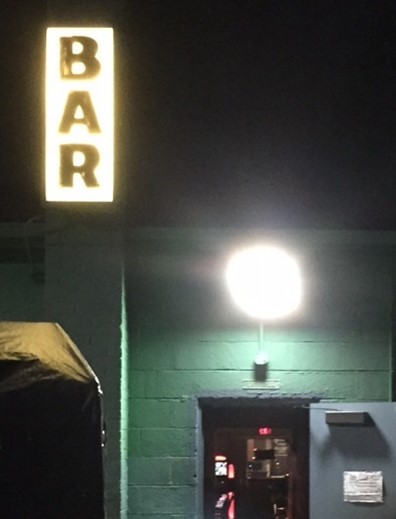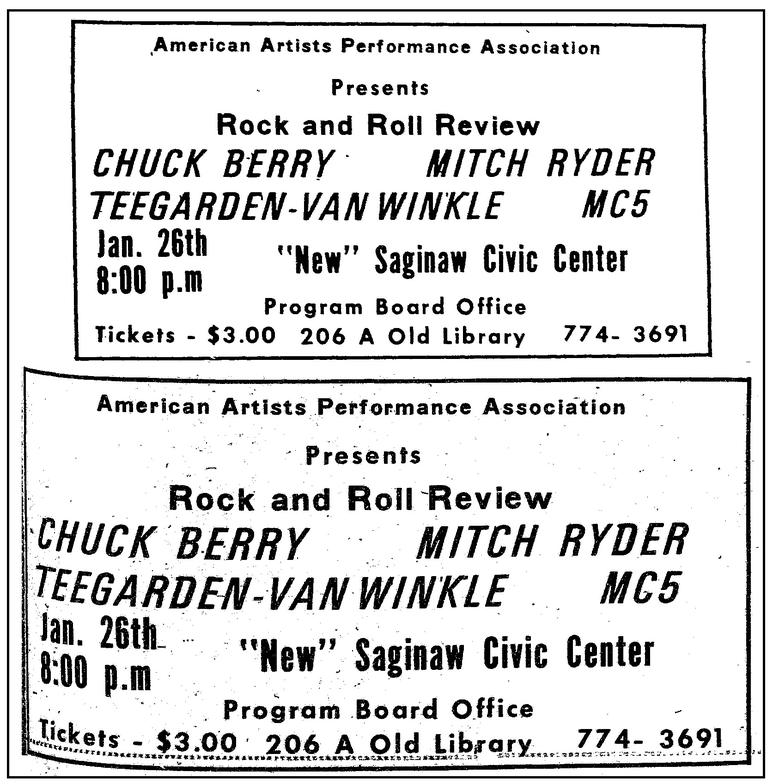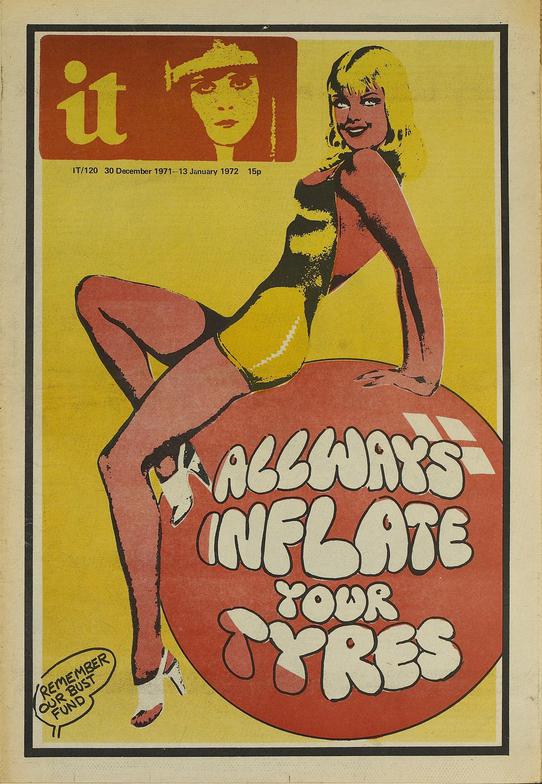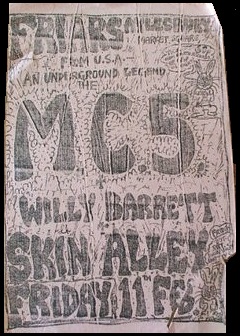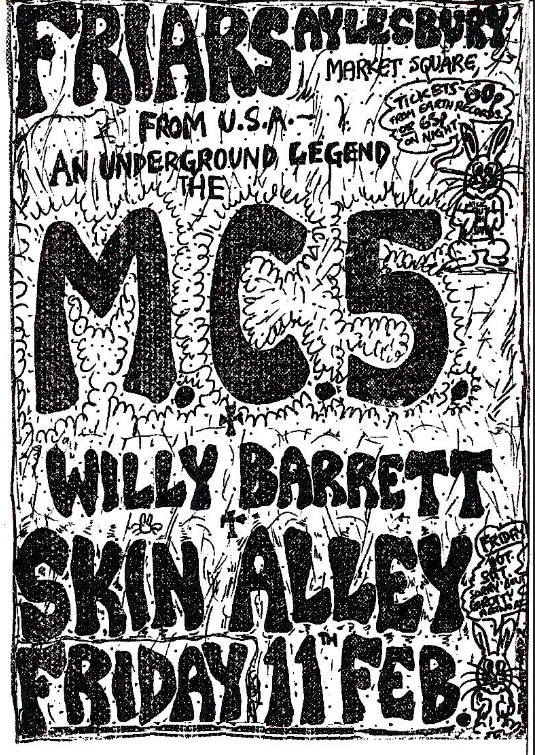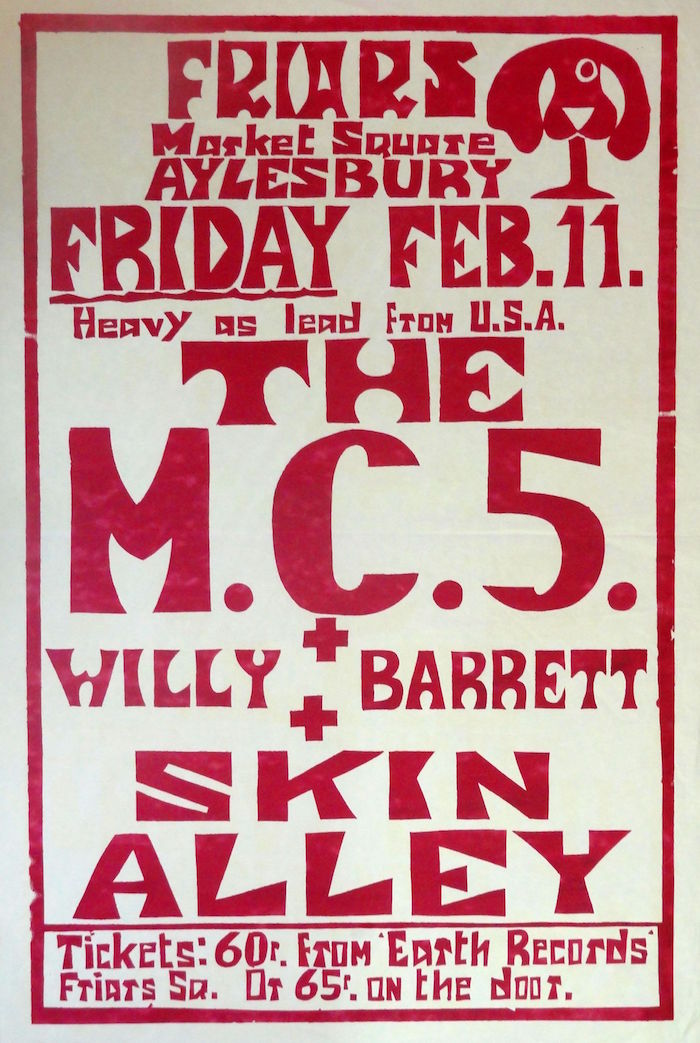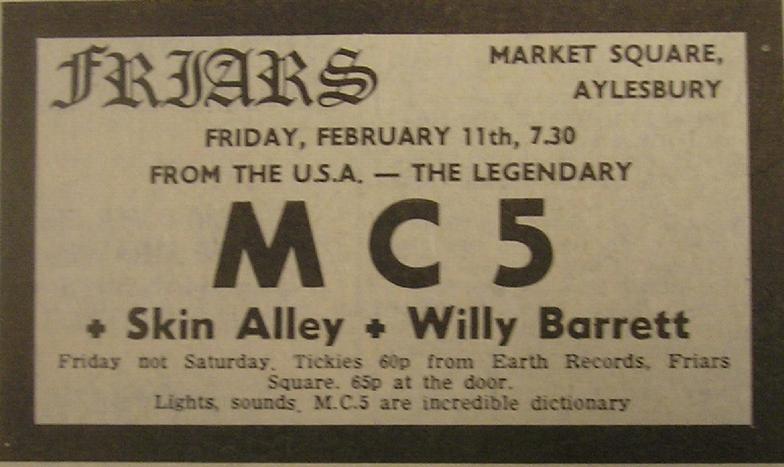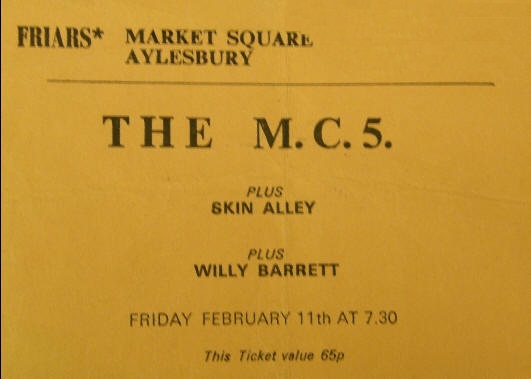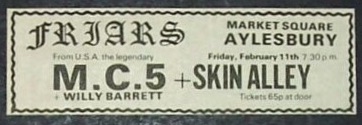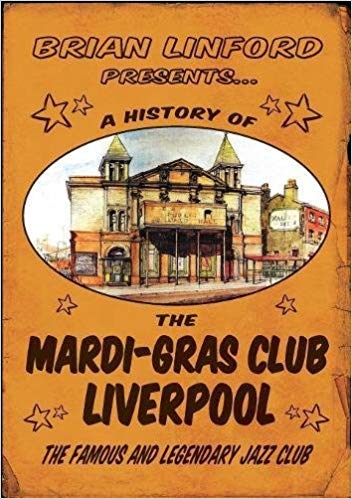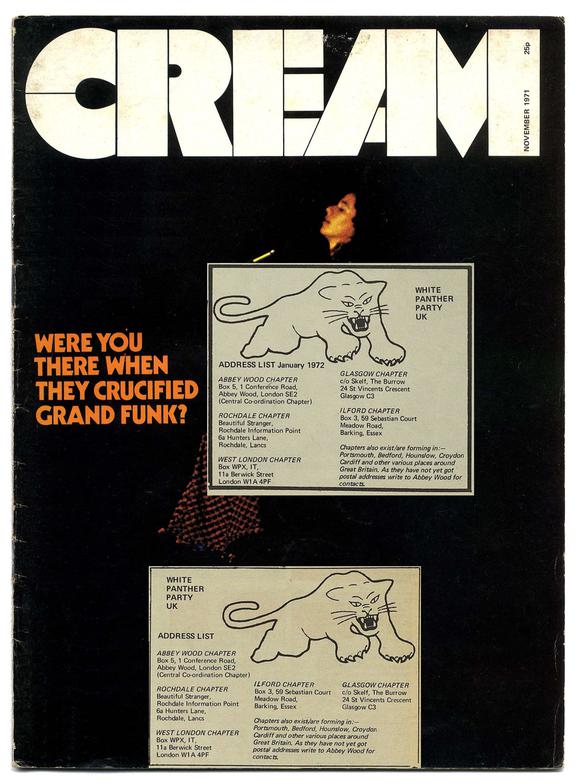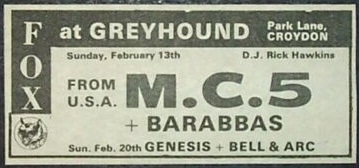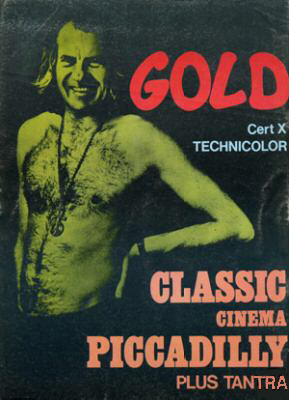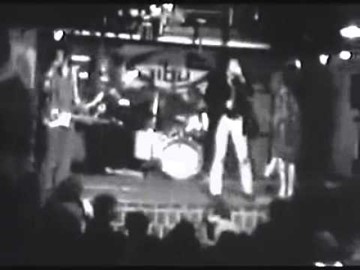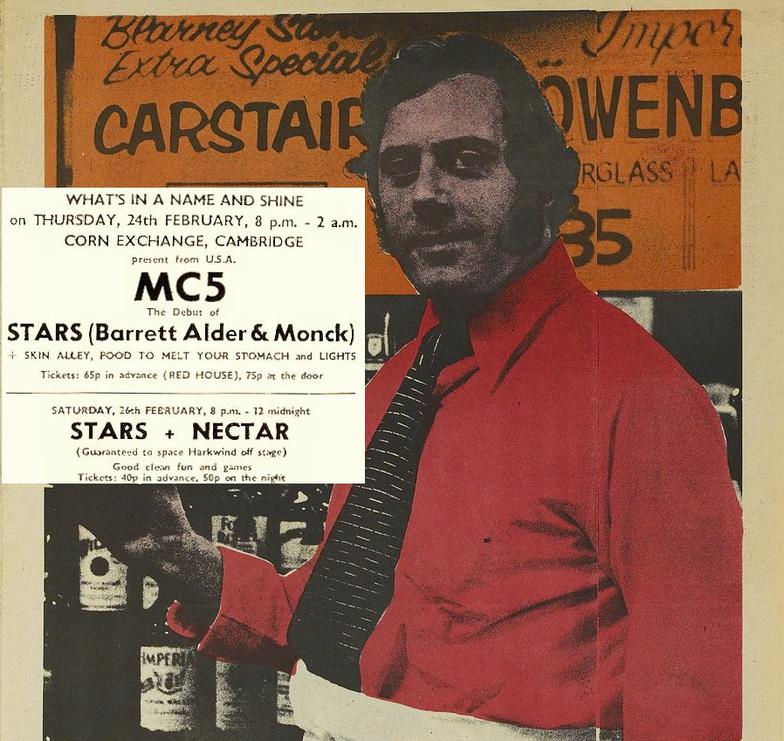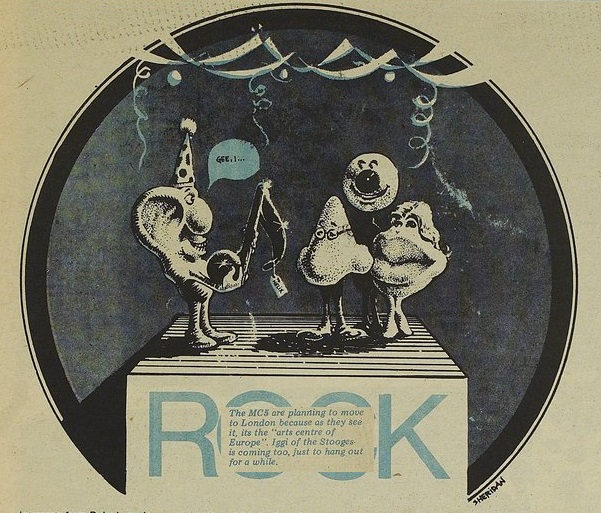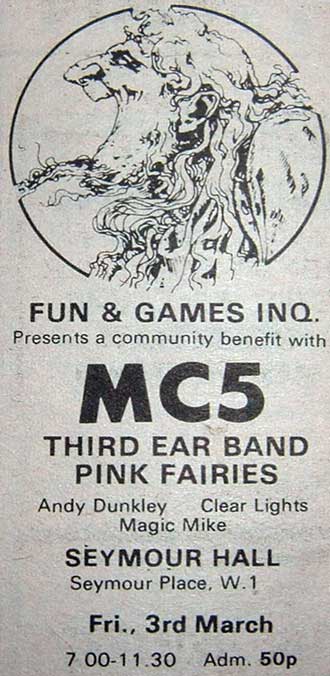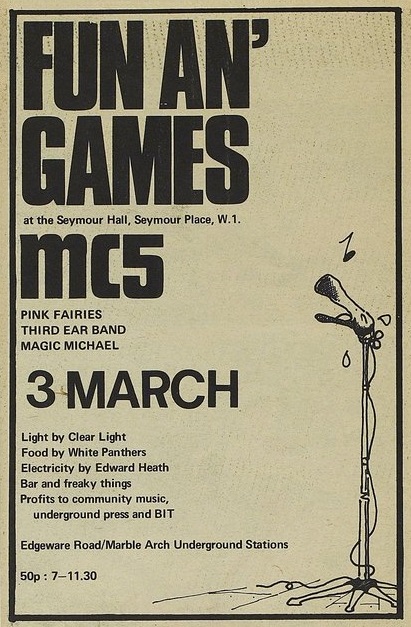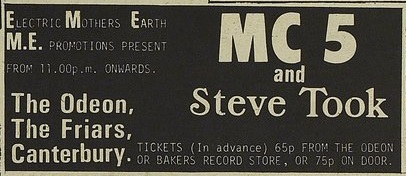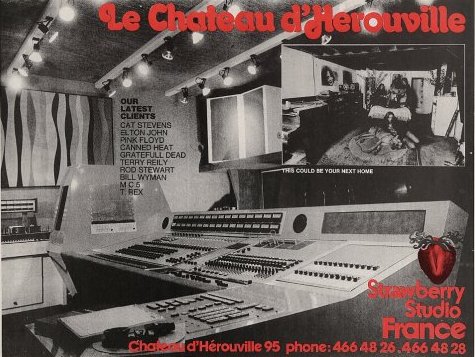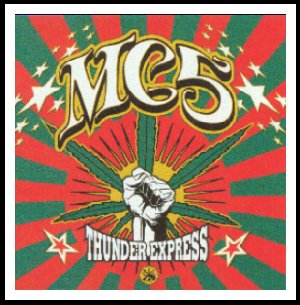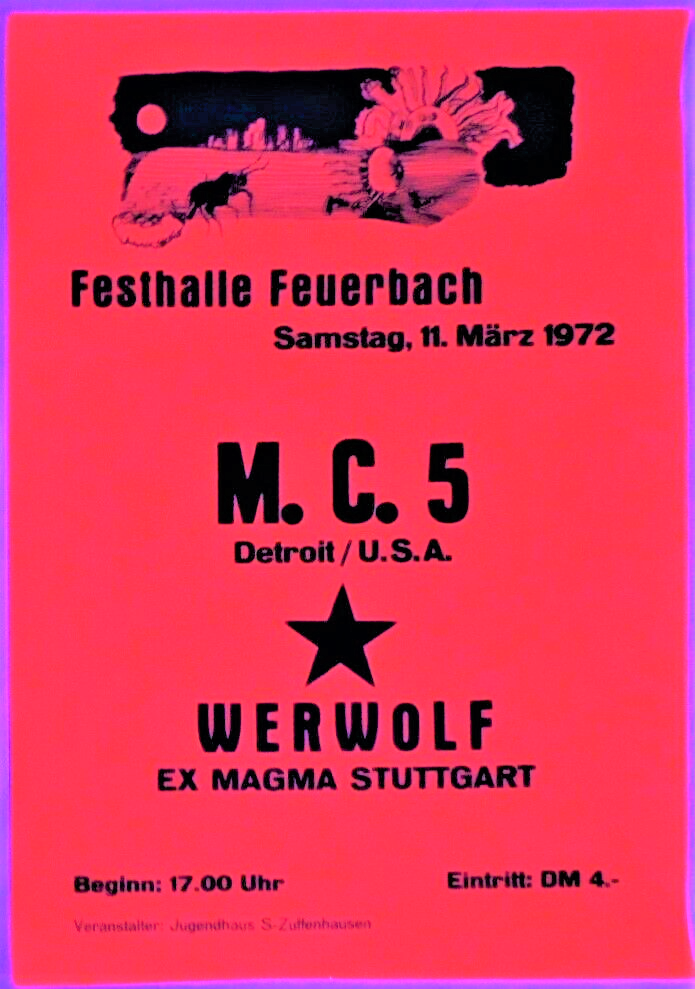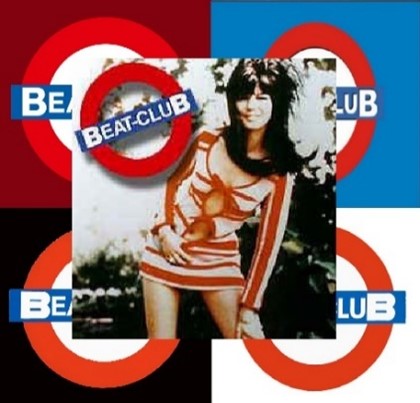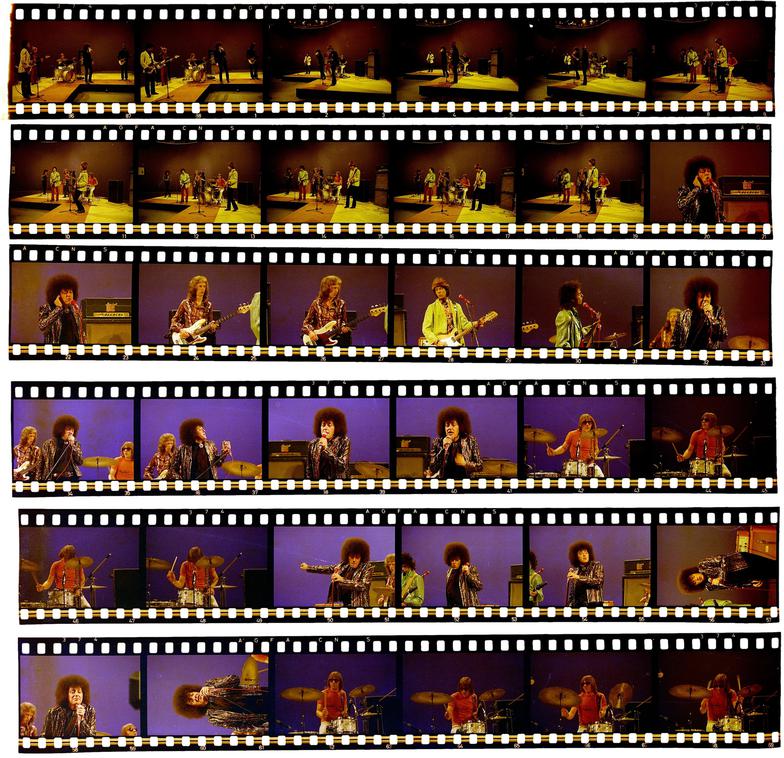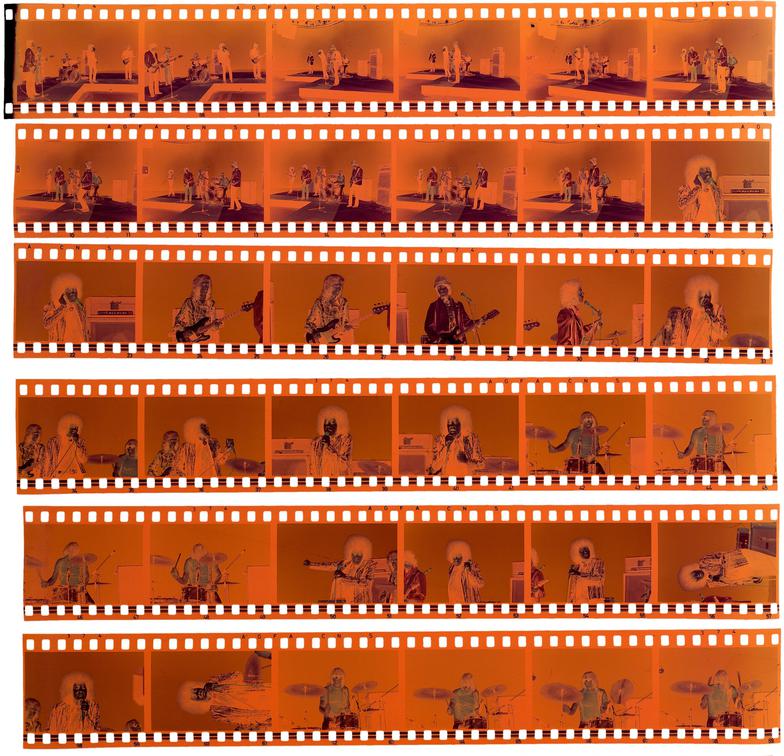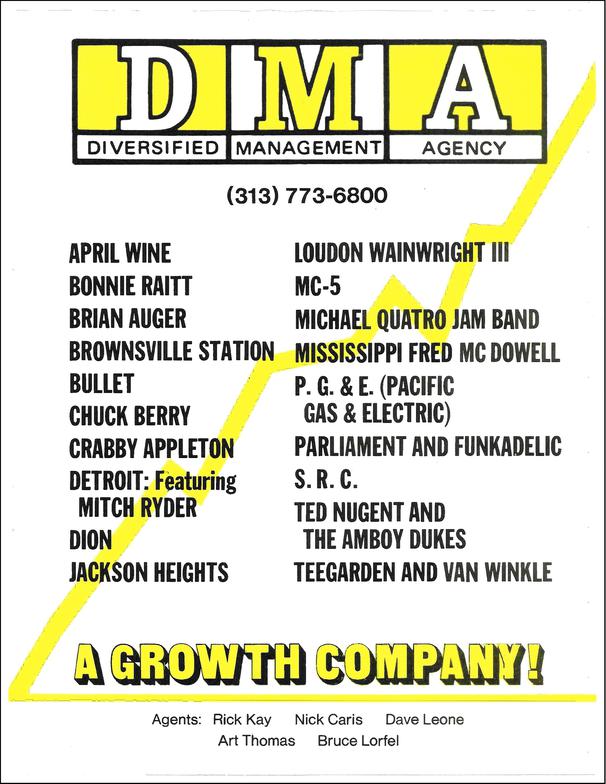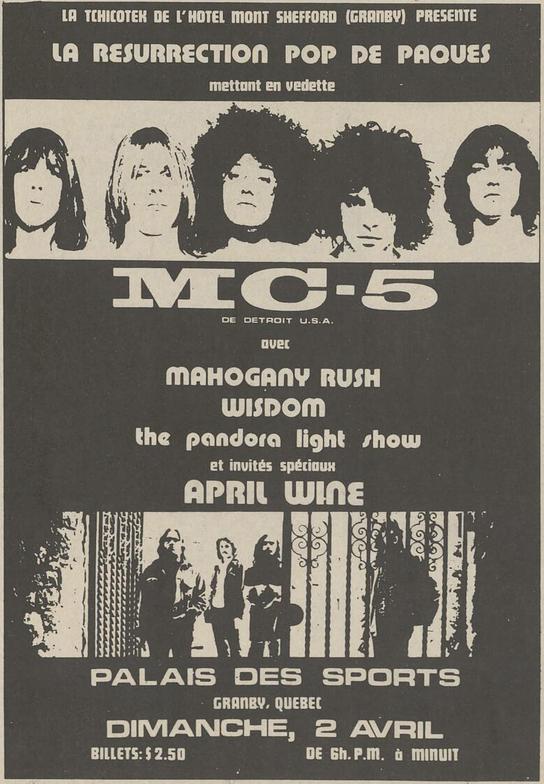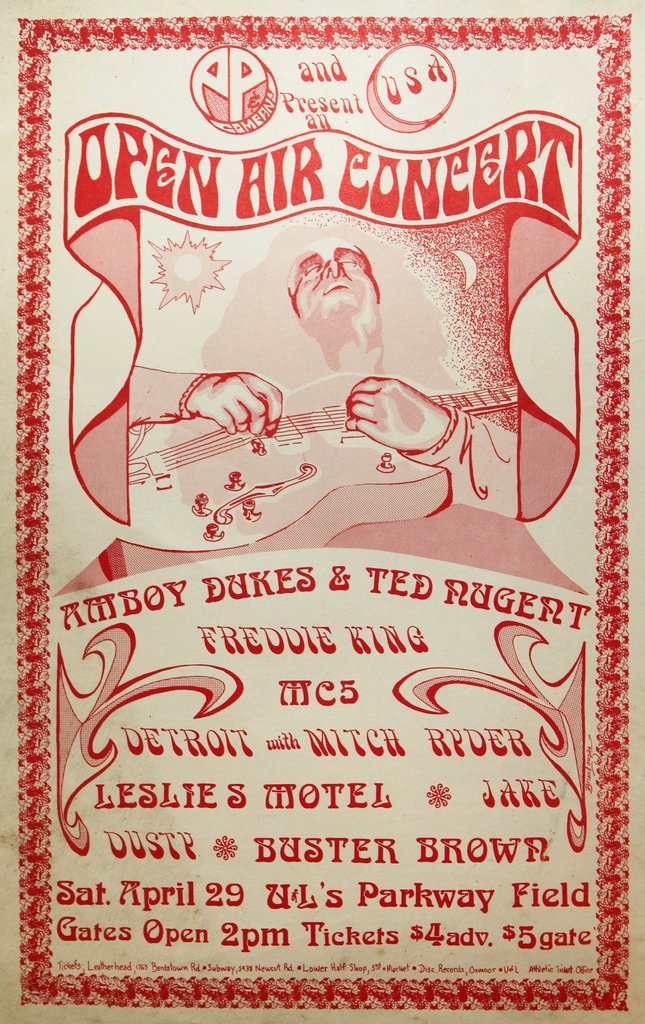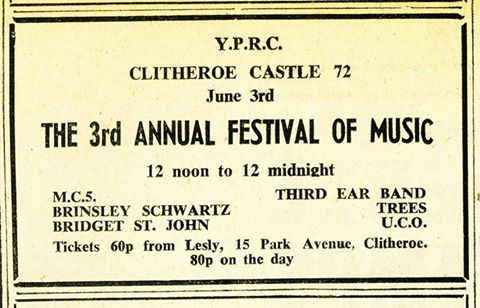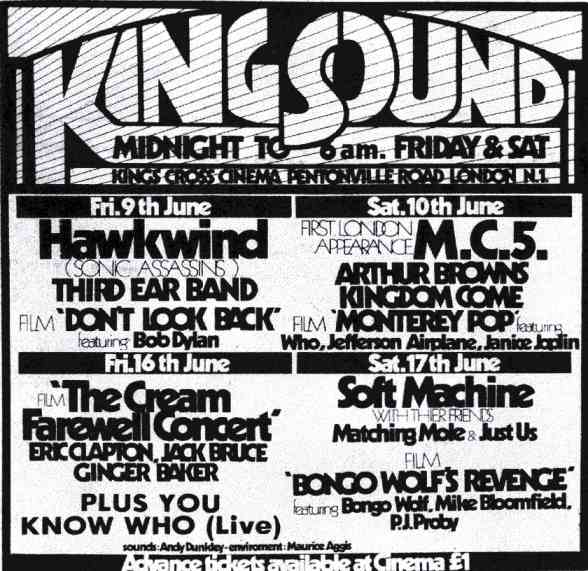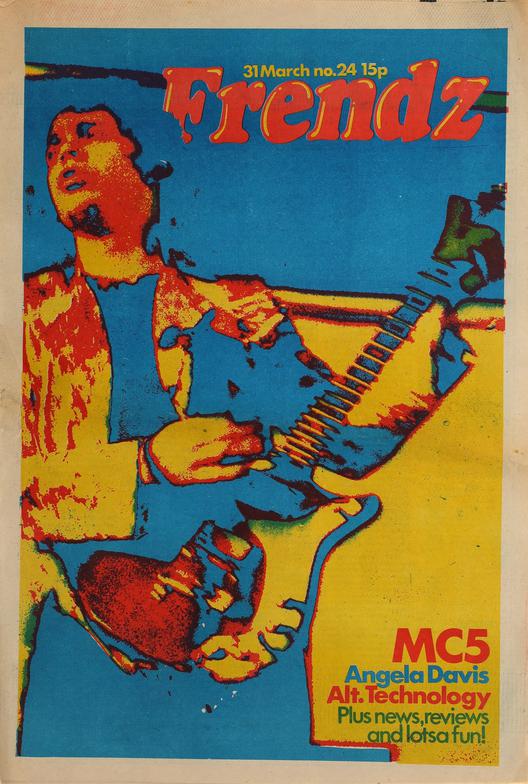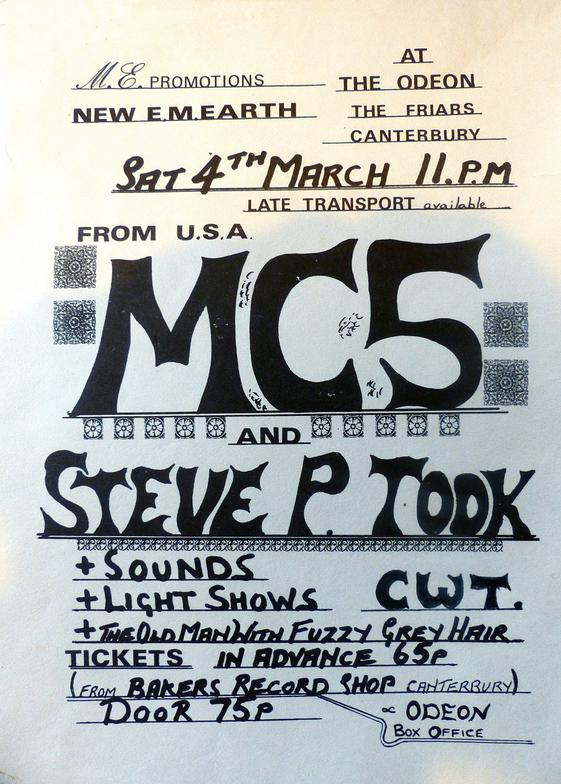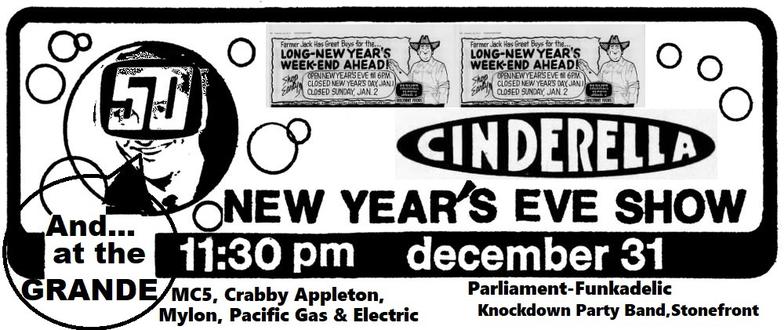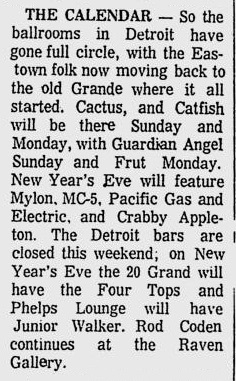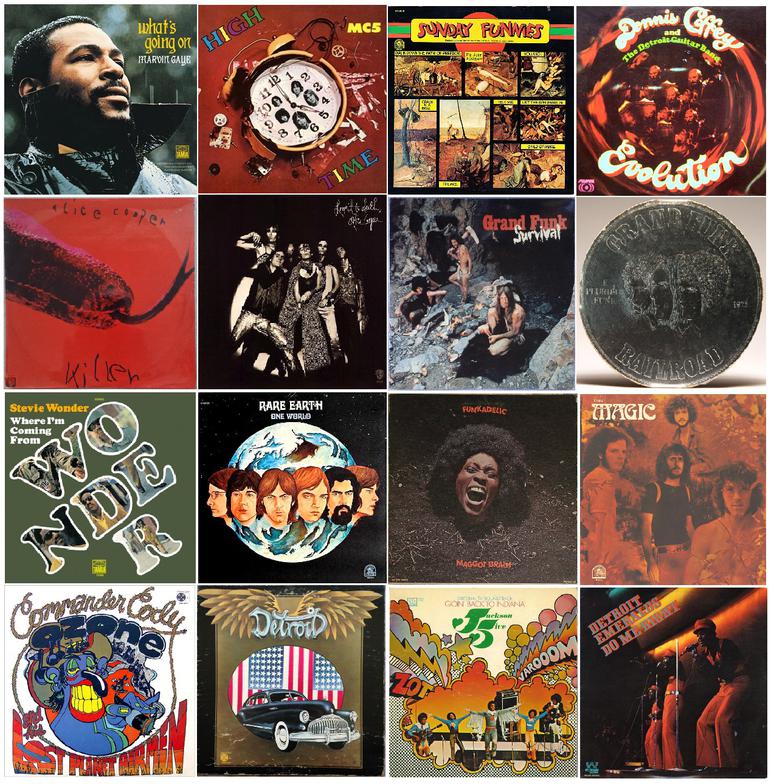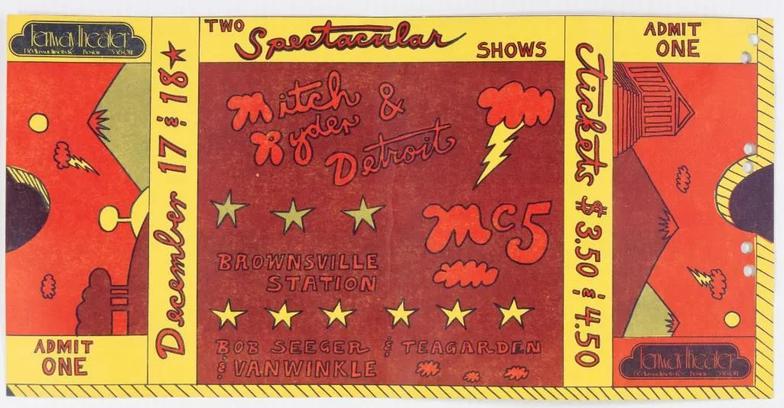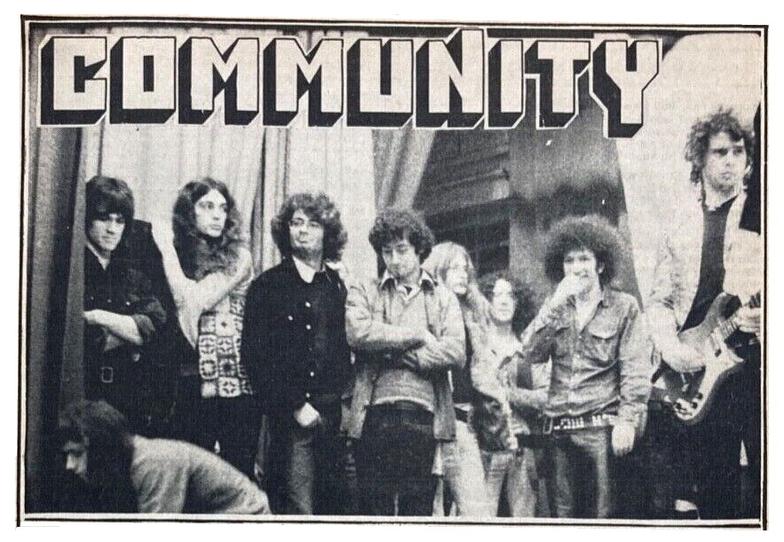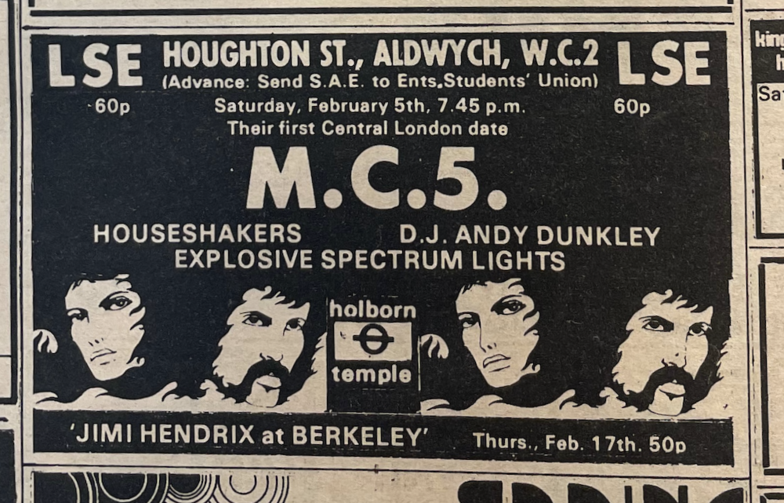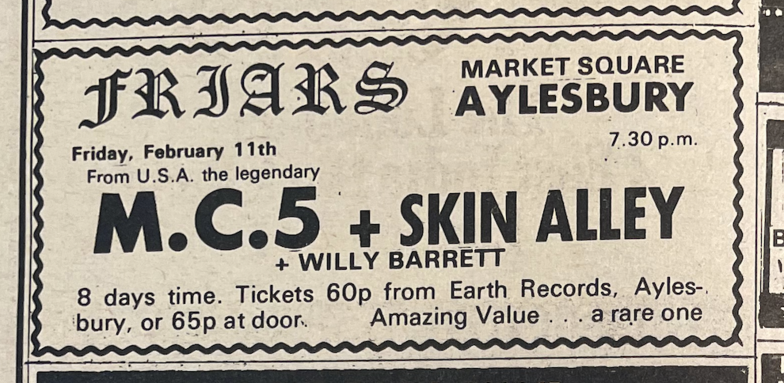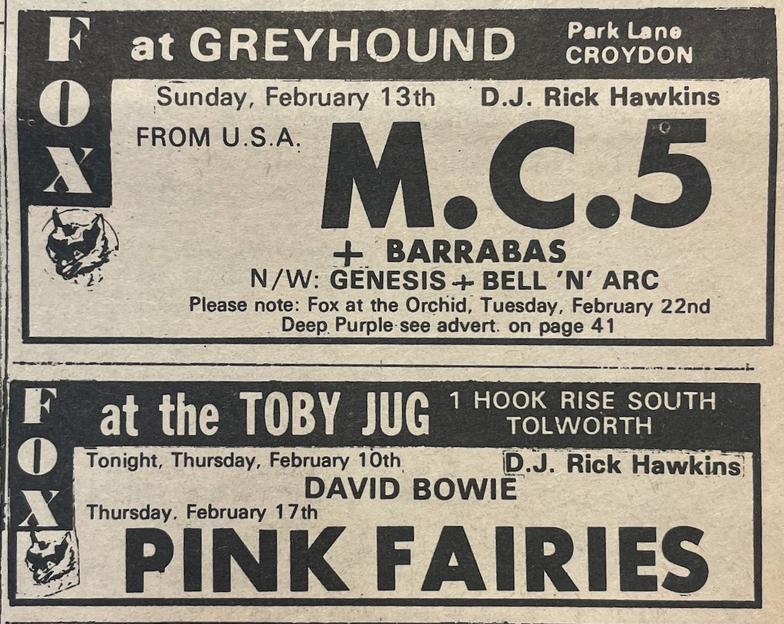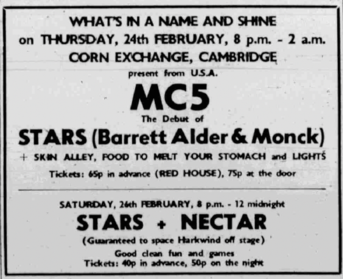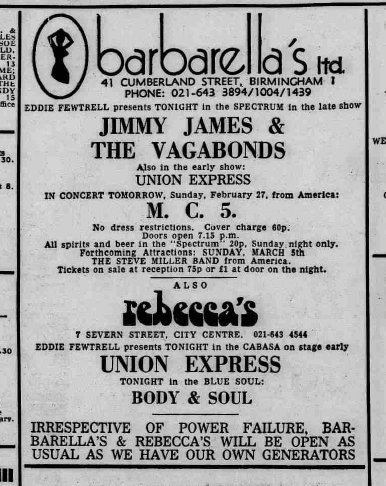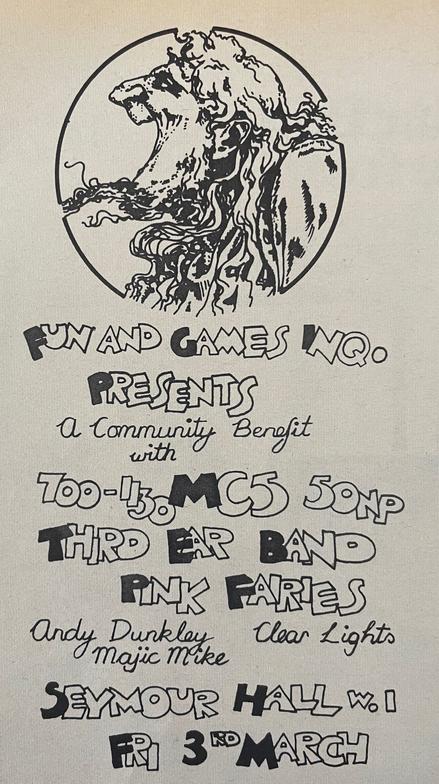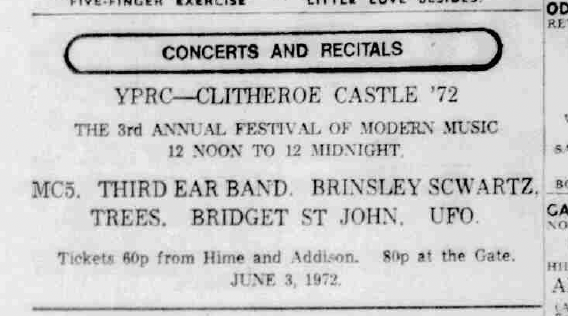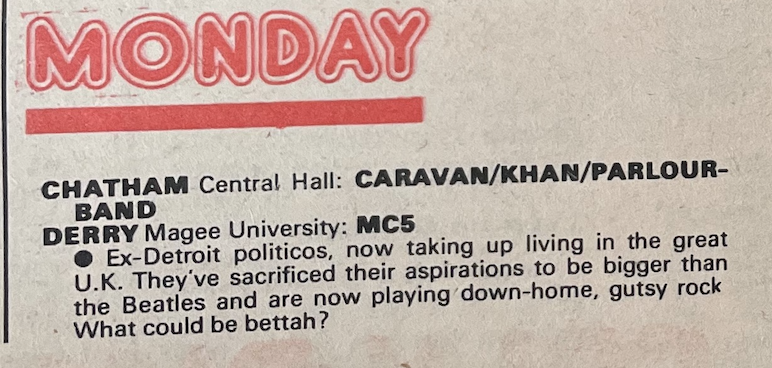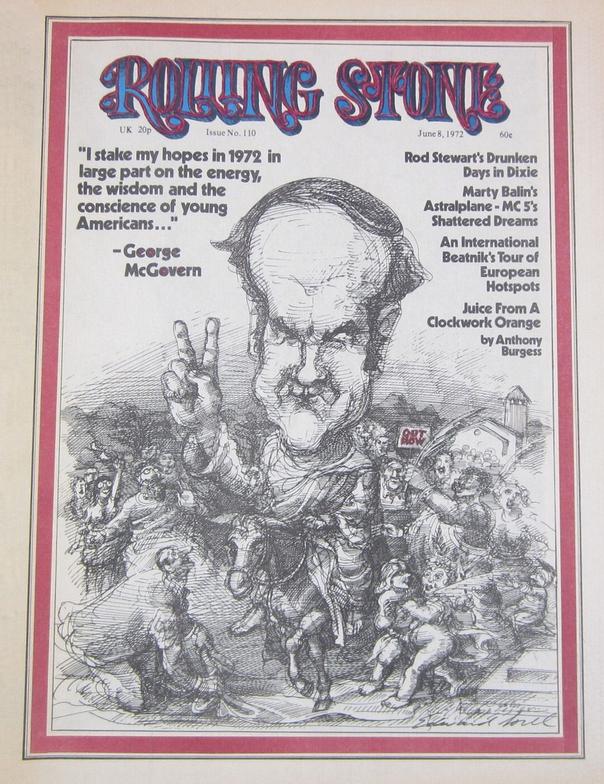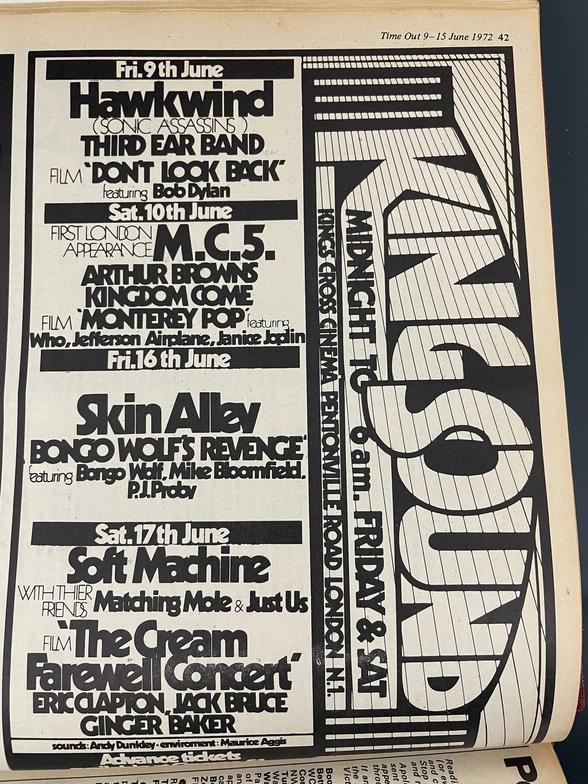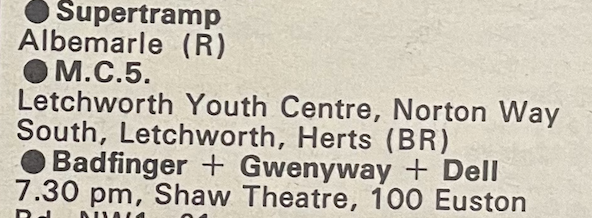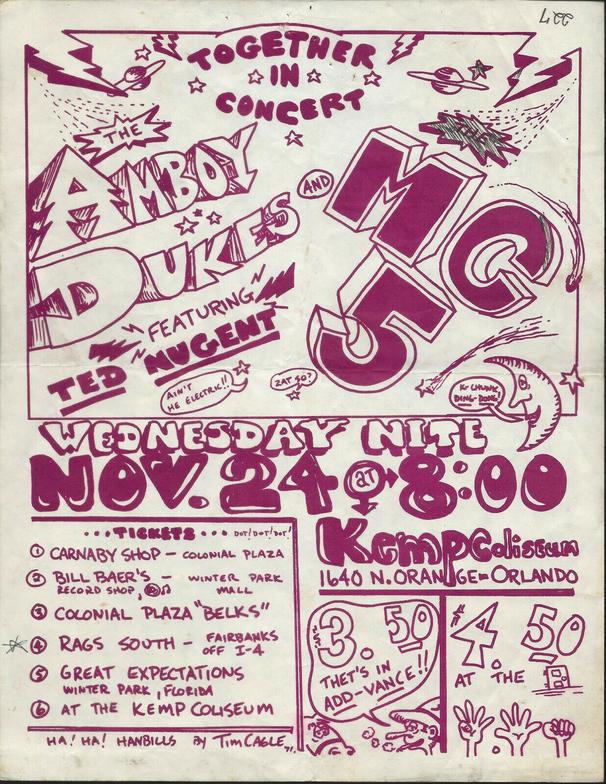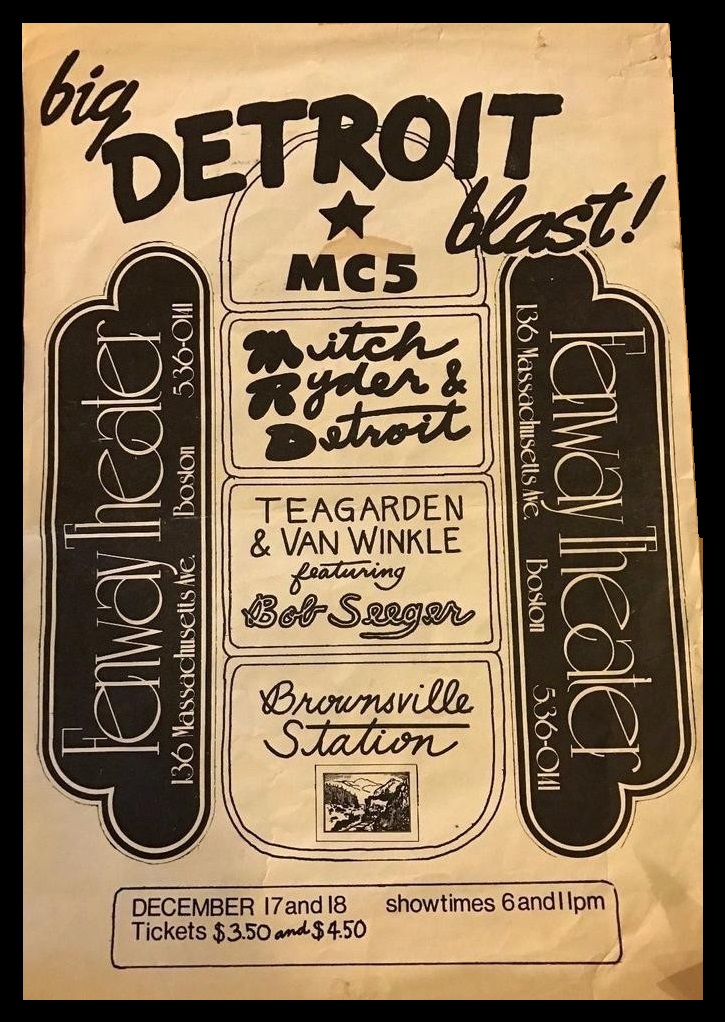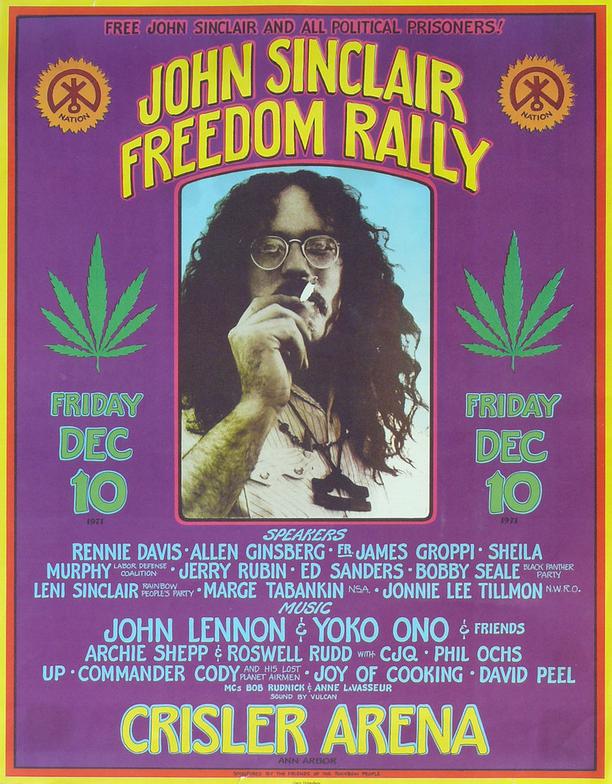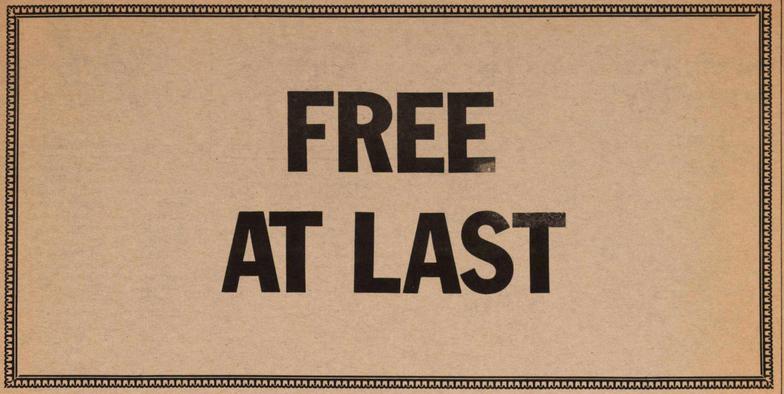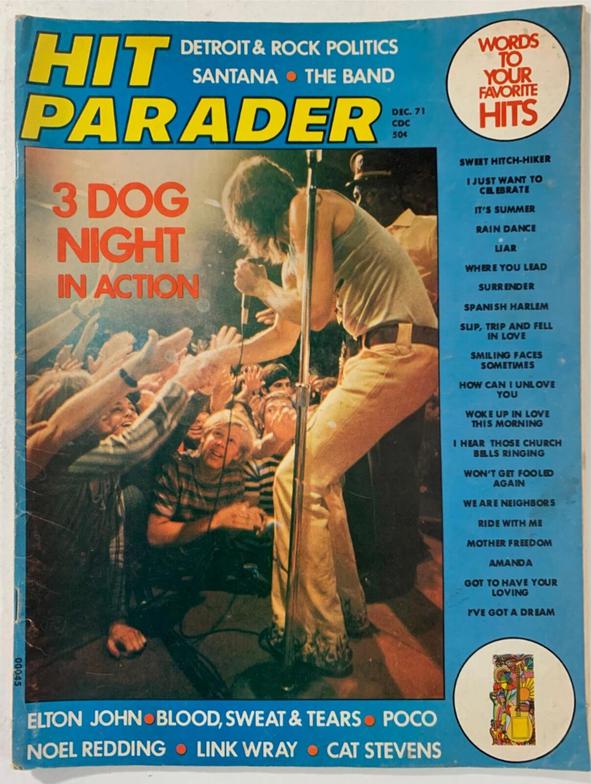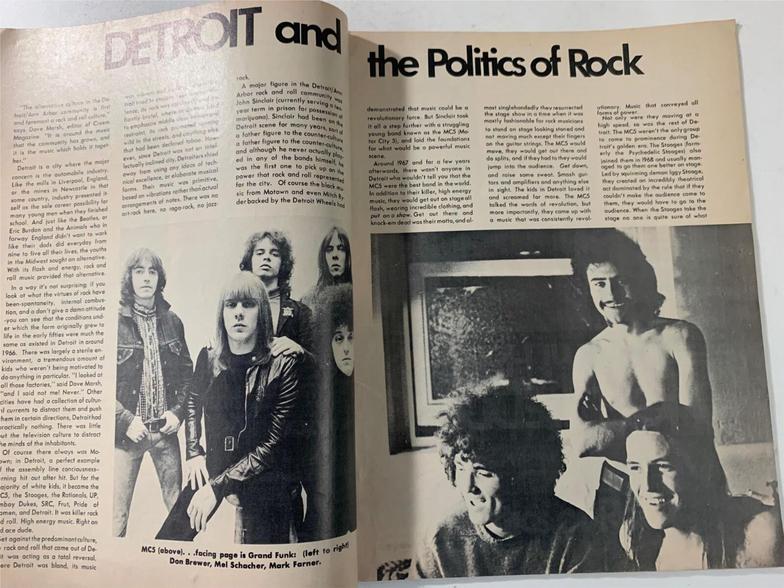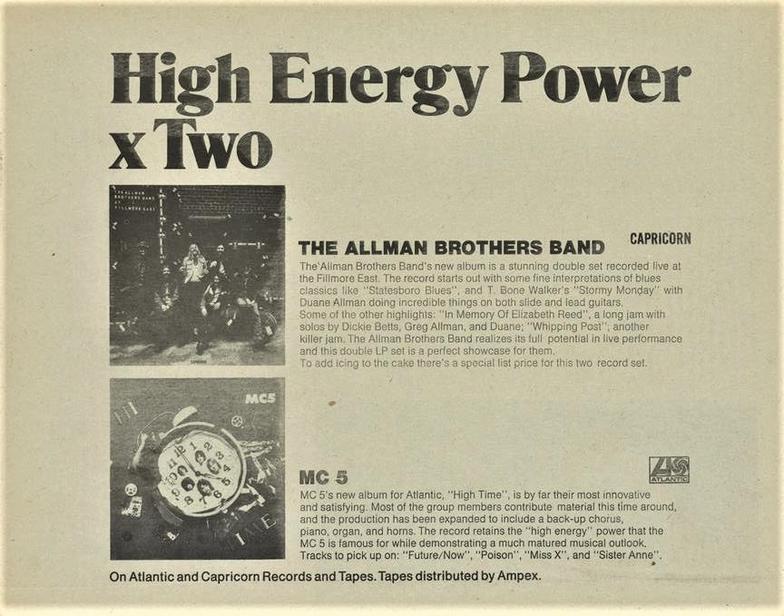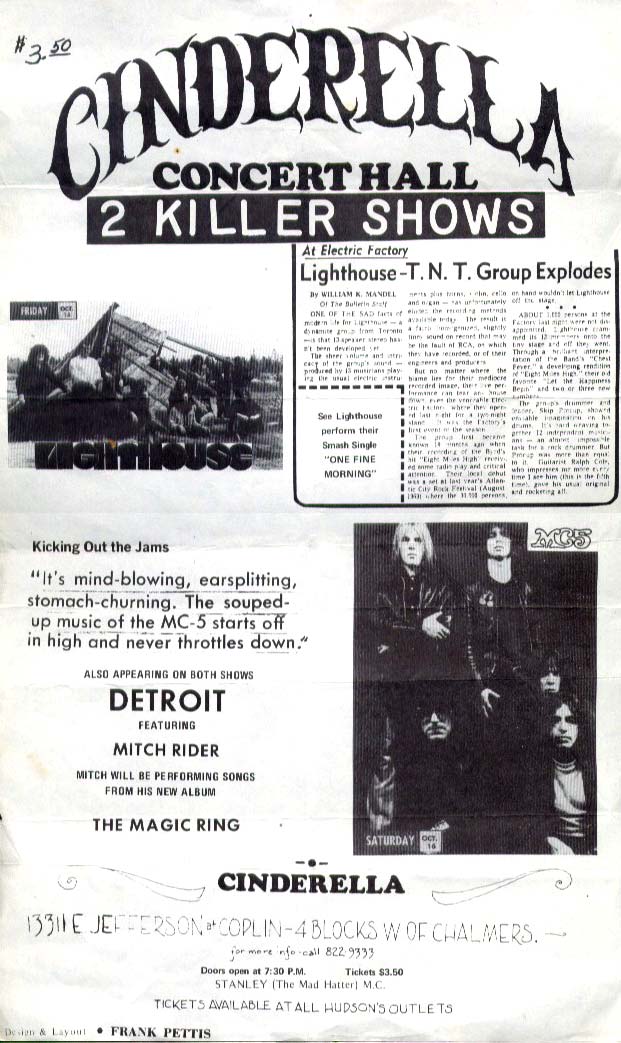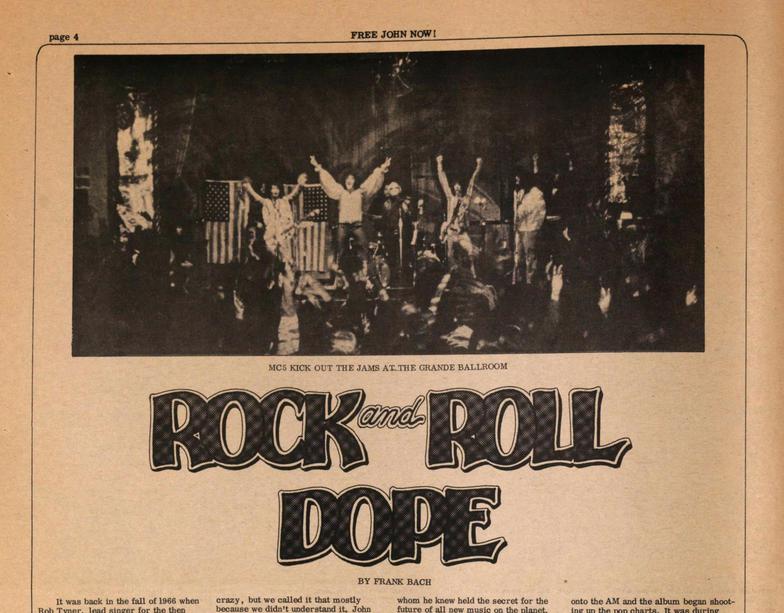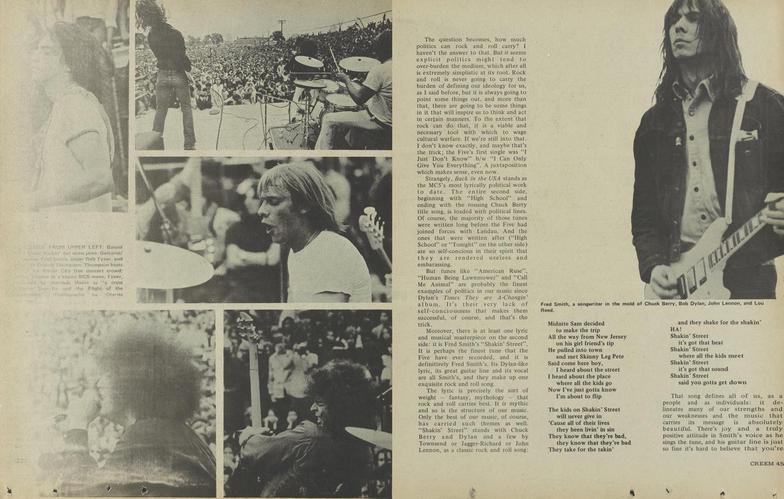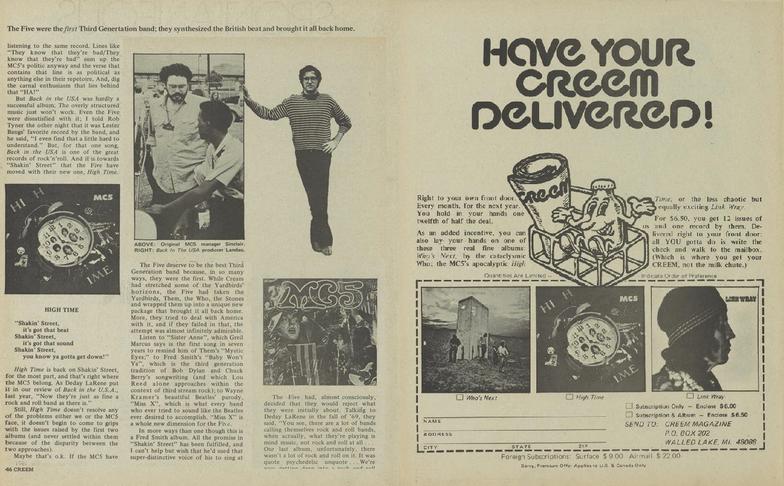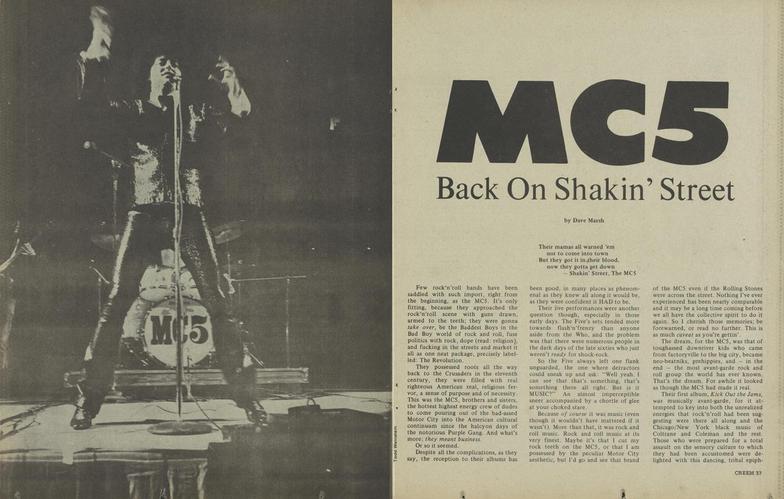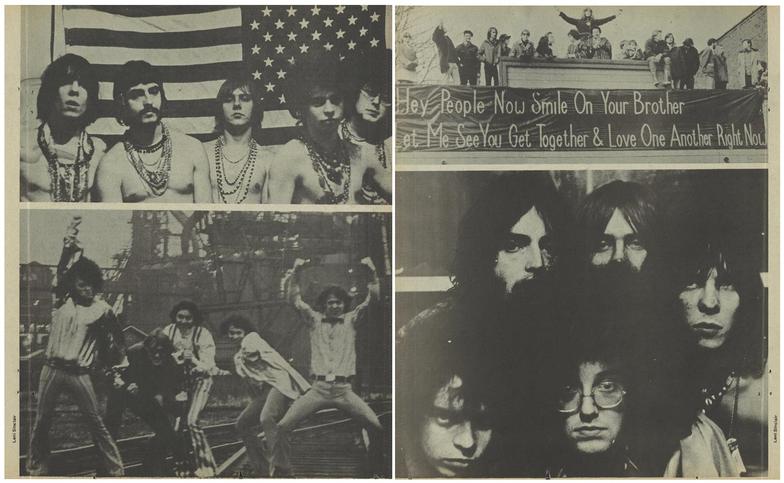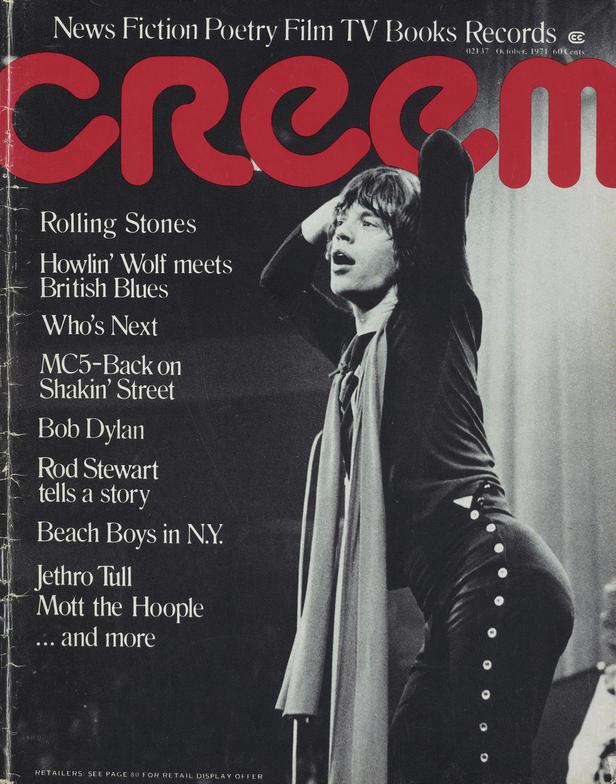Splatt Gallery
Double click here to add text.
Splatt Gallery's History of Michigan Music Posters
MC5 - Page Twelve
************************************************************
1972
On New Year’s Eve 1971, at the stroke of midnight, when the ball-drop ended its descent, a new age commenced that significantly impacted the live music scene in Michigan. On July 1, 1971, the Twenty-Sixth Amendment to the US Constitution had been ratified, granting the right to vote to all persons 18 years of age or older. It was left to the states to determine which other rights were to be given to this new age of majority, and Michigan was one of the first to include lowering the drinking age, from age 21 to age 18, to become effective on January 1, 1972.
In our research, we expected to find blazing headlines saying “Drink Up!”, with pictures of excited crowds of youth hoisting their mugs, but the coverage was rather low-key, the editors apparently not wanting to draw undue attention to the coming bacchanal. The newspapers in the university towns of Ann Arbor and East Lansing rather blandly reported that bar owners were seeing only “slight” upticks in the size of the crowds and predicting that things probably wouldn’t change that much. A month later, however, their cash registers ringing, and the booze flowing freely, the bar owners were happily reporting that business was booming and kids were cramming the drinking holes to capacity.
The impact on the rock and roll scene seems inevitably obvious, ten years earlier teenagers may have been sneaking a nip in the parking lots before going into the teen clubs, now the teen clubs were obsolete, it was much easier for a sixteen year-old to pass for 18 than it would ever had been at 21, and the ranks of the “bar bands” swelled. One writer optimistically hoped that the bars would become like giant street parties, rather than pick-up joints with live bands serving only as loud jukeboxes. The latter proved to be more the case.
A pair of ads, which if this Rock and Roll Review show in Saginaw, Michigan actually took place on January 26, 1972, would be a newly found show for the MC5, also with Chuck Berry, Mitch Ryder and Teegarden & Van Winkle.
The MC5, pretty much missing in action since their show at the Grande Ballroom on New Year’s Eve/Day, embarked on a European tour, with the first show at the London School of Economics in London, England, February 5, 1972.
The British music press announced an ambitious itinerary, with about a dozen shows, recording of a live show(s), and writing and recording a soundtrack to a movie “Gold”.
Bass player Michael Davis, traveling separately from the rest of the band, was turned away from boarding the plane in Detroit because of a syringe in his possession. He took the flight the next day, but he had missed the gig.
The second show in the MC5’s European Tour, at the Friars club in Aylesbury, England, February 11, 1972. The concert was filmed and a couple of videos have come from it. Here’s two of them that seem to be the same song from different angles:
MC5 – Kick Out The Jams (live in Aylesbury, England) (02/11/72)
https://www.youtube.com/watch?v=USrjUQk_kXU
https://www.youtube.com/watch?v=LR4ekLg0Ess
A second poster for the second show in the MC5’s European Tour, at the Friars club in Aylesbury, England, February 11, 1972, and a second video:
MC5 – Tonight (live in Aylesbury, England) (02/11/72)
https://www.youtube.com/watch?v=LR4ekLg0Ess
Ads and a ticket for the MC5 at the Friars club in Aylesbury, England, February 11, 1972.
On February 12, 1972, the MC5 played their third UK show of the tour, at the Mardi-Gras Club in Liverpool, England. Over in England, they also had a “Cream” magazine (spelled with an “a”), and they also had a White Panther Party, who were well aware of the charter group in Ann Arbor, Michigan’s make-over to the Rainbow People, but persisted nevertheless.
On February 13, 1972, the MC5 played their fourth UK show of the tour, at the Greyhound club in Croyden, England. An account of the show, with an interesting snapshot into the band’s thinking at the time, can be found in the link below. Sounds like it was a good show, with an atypical encore, followed by a chat at the pub with the writer. The one thing that was unknown, or at least unspoken, was that this would turn out to be the last show for bass player Michael Davis.
http://makemyday.free.fr/cream.htm
A second newspaper ad for the fourth show of the MC5’s UK tour, at the Greyhound club in Croyden, England on February 13, 1972, this was the final performance with the band for bass player Michael Davis (except for the MC5’s final show on New Year’s Eve 1972). The "MC4" departed from England for six days in France.
In Michael Davis’ book, “I Brought Down the MC5”, he describes getting fired from the band as they were packing to leave for the next tour dates in France. In the three days between the last show in Croyden and the departure to France, probably February 14-16, 1972, the rest of the band, without Davis, went into a recording studio in London to lay down tracks to be used in the soundtrack to the movie “Gold”. Again, better described in the following link which also has a download of scenes from the film that feature the MC5’s music:
http://makemyday.free.fr/gold.htm
The MC5, without bassist Michael Davis, replaced by English bassist Steve "Annapurna" Moorhouse, performed four shows in France, February 17-22, 1972, at the MJC Drouot in Mulhouse, the Ecole des Hautes Etudes Commerciales (HEC) in Jouy-en-Josas , the Gibus in Paris, and the Piblokto in Dourges.
The still shot shown above and the video linked below come from the Gibus show.
MC5 – Live at the Gibus club in Paris, France (February 1972)
https://www.youtube.com/watch?v=Y_cXU71XsKA
The MC5 hired British bassist Steve Moorhouse to replace Michael Davis and they performed four shows in France, returning to England for this show at the Corn Exchange in Cambridge, February 24, 1972.
The opening band, Stars, was ex-Pink Floyd founder Syd Barrett, John Alder, better known as Twink, ex-drummer for Pink Fairies, and bassist Jack Monck. Reviews of the show were so bad that after fulfilling the next night’s show with Nektar, Barrett called it quits.
One the next night, February 25, 1972, the MC5 performed at the Lanchester Polytechnic in Coventry , England.
The February 24, 1972 issue of the International Times newspaper in London, England, reported “The MC5 are planning to move to London, because as they see it, it’s the ‘art center of Europe’. Iggi (sic) of the Stooges is coming too, just to hang out for a while.”
Posters/ads for the MC5 at Seymour Hall in London, England, March 3, 1972. It was their thirteenth show, one month into their European tour, and their ninth with new bass player Steve Moorhouse.
Flyer for the MC5 at The Odeon in Canterbury, England, March 4, 1972, from the website of supporting act Steve Took.
Newspaper ad for the MC5 at The Odeon in Canterbury, England, March 4, 1972, with Steve Took.
Sometime in early March 1972, the MC5 booked some studio time at Strawberry Studio in France. Some filming for a TV show was produced, along with tracks that became the “Thunder Express” bootleg.
MC5- Thunder Express (album) (1972)
https://www.youtube.com/watch?v=k_--VgXfSgM
If this is authentic, and we believe it is, this is a new show for the MC5 Gateway tour dates timeline, with the group appearing in Stuttgart, Germany on March 11, 1972. The timeline has a ten-day gap in their German tour, making this show all the more likely. We know that the listing of the year is usually a red flag, but it was actually pretty common with European show posters.
Following the recording session in France that produced the bootleg album “Thunder Express” in early March, the MC5 went to Germany for at least two shows in Berlin on the 9th and 19th, and then recorded an in-studio concert on March 25, 1972 to be broadcast on the German TV show “Beat Club. Bass player Steve Moorhouse had quit and was replaced by Derek Hughes before the Germany dates.
Apparently, the show was never aired until 2009 (!). The following video may be as complete as there is for the full show, lasting about 28 minutes and shot in front of a blue screen.
MC5 – Live Beat Club, Germany (1972)
https://www.youtube.com/watch?v=5SahAHnOK2w
These two videos are representative of the final product, with images over the blue screen and in one of them, being introduced by the show’s host, Uschi Nerke.
MC5 – Kick Out The Jams – Beat Club, German TV (1972)
https://www.youtube.com/watch?v=CmLJ86aTHD0
MC5 - Black to Comm - Beat Club, German TV (1972)
https://www.youtube.com/watch?v=LCDmmXTQ5oE
A collection of still frames from the German TV broadcast of the MC5 at the Beat Club in Bremen, Germany, filmed on March 25, 1972. Also visually interesting are the film negatives shown below:
The film negatives of the still frames from the German TV broadcast of the MC5 at the Beat Club in Bremen, Germany, filmed on March 25, 1972. Would make for some great posters.
A full-page ad for DMA in the March 25, 1972 issue of Billboard magazine, showing the growth of Dave Leone’s agency, now also representing nearly a dozen non-Michigan acts in addition to the locals, Brownsville Station, Detroit featuring Mitch Ryder, MC5, Parliament Funkadelic, SRC, Ted Nugent & the Amboy Dukes, and Teegarden & Van Winkle.
The March 31, 1972 issue of the British Magazine Frendz which hit the streets in England just as the MC5 (the four actually) were landing back home in Detroit, their first European stint of 1972 concluded. In the magazine, Wayne Kamer told the interviewer that the band was returning to the US for five weeks to clear out their apartments, sell their cars, and would return to England permanently.
A poster for the MC5 with April Wine, Mahogany Rush, and Wisdom at the Palais des Sports in Granby, Quebec, Canada on April 2, 1972. According to the MC5 Gateway, the band would have been returning to the US without a bass player following their last known show of their EU/UK tour, at the Beat Club TV studio in Bremen, Germany on March 25, 1972. “Back to the USA, Ray Craig is the new bassist for the MC5 until they eventually return to Europe in June.”
The setlist.fm database does list this show on April 2, 1972 at the Palais des Sports, including the MC5 and the other three bands.
While the MC5 were back in Detroit, purportedly preparing for a permanent move back to England, they played a couple of shows at the Frut Cellar, April 7th and 8th, and at the Parkway Field in Louisville, Kentucky, April 29, 1972. We were lucky enough to find this image of the poster by an unknown artist, showing the MC5, who would have had substitute bass player Ray Craig, with Ted Nugent & the Amboy Dukes and Detroit with Mitch Ryder.
The MC5 became inactive through the entire month of May 1972, resurfacing in the UK in June.
The MC5 were back in England, with bass player Derek Hughes, their first show was June 1, 1972 at the City Hall in Leeds. This is either their second or third show, June 3, 1972 at the Clitheroe Castle Festival in Clitheroe. They had car troubles and ended up arriving late, and could only play a half-hour set before the midnight curfew. A review said they “gave everyone a rocking finish to the day with good strong guitar breaks interspersed with corny phrases like ‘We’ve just got in from Detroit in the US of A’”.
An ad for the MC5 at Kings Cross Cinema in London, England on June 10, 1972, with Arthur Brown’s Kingdom Come and a screening of the “Monterey Pop” movie.
MC5 Poster History - continues - HERE
The regrettable lack of reliably regular posters in Detroit since the decline of the Grande Ballroom, there were all too few posters made for the run of great shows from 1970 to 1971, particularly at the Eastown Theater. Apparently, the only way people could find out about these shows were in the small print of the newspaper calendar sections. So, we’re forced to create our own lousy mash-up to document two great New Year’s Eve 1971 shows - the MC5 at the Grande Ballroom, and Parliament-Funkadelic at the Cinderella.
A blurb in a newspaper events calendar that reads, “So the ballrooms in Detroit have gone full circle, with the Eastown folk now moving back to the old Grande where it all started.” It described the line-up for two shows at the Grande Ballroom, December 26-27, 1971, with Cactus and Catfish on both nights, and with Guardian Angel and Frut on the first and second nights respectively.
The ad also describes the up-coming line-up for New Year’s Eve, December 31, 1971, with the line-up of MC5, Mylon, Pacific Gas & Electric, and Crabby Appleton. And an interesting comment that Detroit bars closed for Christmas.
1971 was a pretty good year for Michigan albums, landmark records from Marvin Gaye and Funkadelic, two solid releases each by Alice Cooper and Grand Funk Railroad, a fine, unfortunately final, album from the MC5, the stellar “Detroit” album from Mitch Ryder’s new group, debut albums by Commander Cody & his Lost Planet Airmen and the Sunday Funnies, and trend-setting music from Stevie Wonder, Jackson 5, and Dennis Coffey.
A sweet little poster/flyer that looks like a ticket but is about 8 x 16 inches in size for an all-Michigan bill at the Fenway Theater in Boston, Massachusetts, December 17-18, 1971. A show review described how there was supposed to be two shows each night at 6 and 11 pm, but due to late arrivals of the performers and a sparse crowd of only about 200 turned into one long show that commenced at 7:25 with Brownsville Station, followed by Mitch Ryder & Detroit, the MC5, and capped off by Bob Seger with Teegarden & Van Winkle.
Published on the day of the second show, the review mentioned that the upcoming evening’s show would also be a single show starting at 8 pm and hoped for a better turnout.
A newspaper clipping showing the total assault of Michigan bands on the Boston – Providence area, with the December 17-18, 1971 shows at Fenway described previously, plus another show on December 21, 1971, with MC5, Amboy Dukes, Mitch Ryder, Bob Seger, Teegarden & Van Winkle, and Jonathan Round.
A photo of Wayne Kramer with some of his British friends in the March 1972 issue of the International Times newspaper. Published simultaneously, the March 2, 1972 issue of the Ann Arbor SUN had some laments with a somewhat bitter taste:
“Since abandoning the Michigan rock n roll community, the MC5 have had troubled times. The firing of bassist Michael Davis last week in Europe comes as no shock to those who remember how they callously dumped manager John Sinclair after he was sent to the slammer, and the sudden crash expulsion of Brother JC Crawford. Michael, the remaining four report, was lost to the “White Witch”. His five-year relationship with the band had been deteriorating since producer (?) Jon Landeau had Wayne Kramer do the bass parts on “Back in the USA”. (Don’t know who the new bass player will be.) The MC5 minus one, whose next album will be on the New Morning label distributed by Roulette Records, will be backing Iggy Stooge at the Roundhouse in London some time next week.” (That did not happen.)
Newspaper ad for the MC5 at the London School of Economics in London, England on February 5, 1972. The first show of the tour, bassist Michael Davis is denied boarding a flight out of Detroit when a syringe is found in his possession. He flies out the next day but he misses this show.
Newspaper ad for the MC5 at Barbarella’s in Birmingham, England, with “no dress restrictions” and for less than a dollar on February 27, 1972. The Gateway lists a show on February 28th at Seymour Hall in London, and a letter writer to Melody Maker magazine described an aborted show at the Flamingo at Redruth on the 29th. The writer believed that the band left over a dispute on their payment, but Ronan O’Rahilly, the band manager for the tour claimed that the club’s generator was not functioning properly for the amount of power needed for the MC5’s equipment.
A listing for the MC5 at Plymouth Polytechnic on March 1, 1972.
A listing for the MC5 at the Speakeasy in London, England on March 23, 1972. Possibly conflicts with the March 25th date for the Bremen Club in Germany, but not unresolvable.
The next show in the Gateway, after the March 25th Bremen show, is at the Frut Cellar in Mount Clemens, Michigan on April 7-8, 1972 with bass player Ray Craig.
A newspaper listing for the MC5 at City Hall in Leeds on June 1, 1972, as the band returned to England after a fairly unproductive two months back in the USA.
An events listing with the MC5 at Magee University in Derry, England on June 5, 1972.
The front cover of the June 8, 1972, issue of Rolling Stone magazine with a headline for a feature story on the MC5 called “Shattered Dreams in Motor City”.
A newspaper listing for the MC5 with Swastika at Guild Hall in Northampton, England on June 9, 1972.
A newspaper listing for the MC5 at the Letchworth Youth Centre in Letchworth, England on June 11, 1972.
A newspaper listing for the MC5 at Trinity College in Cambridge, England on June 12, 1972.
A great poster with the MC5 and Amboy Dukes at Kemp Coliseum in Orlando, Florida on November 24, 1971.
Indications are that the Amboy Dukes did indeed perform at Kemp Coliseum in Orlando, Florida on November 24, 1971, the date does appear on some timelines, but without the MC5, and the concert database has a show preview from a newspaper that describes Bo Diddley as the special guest, with the promise that Nugent would join Diddley “for a super jam encore”, but again with no mention of the MC5. The newspaper article also confirms the ticket prices and ticket sale locations that are on the poster.
We believe that the above poster is authentic, because of the amount of detail we don’t think it was just artist Tim Cagle’s “pipe dream”, but we also believe that, for some reason, the MC5 did not appear.
Another great poster by an unknown artist for an all-Michigan show with the MC5, Mitch Ryder & Detroit, Teegarden & Van Winkle featuring Bob Seger (both names misspelled), and Brownsville Station at the Fenway Theater in Boston, Massachusetts, December 17-18, 1971.
The MC5's former manager John Sinclair was released from prison on December 13, 1971. He had served 868 days, or two years, four months, and fifteen days behind bars.
Maybe it was just a matter of timing, the Michigan State Legislature had significantly reduced the penalties for marijuana, effective April 1, 1971, and John Sinclair’s case was being reviewed. Or maybe it was because a BEATLE had come to the state to support his cause, but for whatever reason, just three days after the rally in Ann Arbor, Sinclair was free at last.
The December 1971 issue of Hit Parader magazine featured a cover headline “Detroit & Rock Politics”, with photos of the MC5 and Grand Funk Railroad.
Poster by Frank Pettis for the Cinderella Concert Hall, more commonly known as the Cinderella Ballroom, with the band Lighthouse on October 15, and the MC5 on October 16, 1971. The bands Detroit featuring Mitch Ryder and Magic Ring opened both nights.
Photo by Leni Sinclair, lettering by Gary Grimshaw, and article by Frank Bach in the October 29, 1971 “Free John Now!” supplement issue of the Ann Arbor SUN newspaper in Ann Arbor, Michigan.
A full-page (ran sideways) record company ad with the third MC5 album “High Time” in the October 1971 issue of CREEM magazine.
More photos and a nice page layout in the MC5 feature story in the October 1971 issue of CREEM magazine.
A few more photos from the MC5 feature story in the October 1971 issue of CREEM magazine, with a review of the “High Time” album, and finally, the subscription page in the issue offering “High Time” as a premium.
The first two pages of the ten-page story on the MC5 by Dave Marsh in the October 1971 issue of CREEM magazine.
Two pages of photos by Leni Sinclair for the MC5 feature story in the October 1971 issue of CREEM magazine.
The October 1971 issue of CREEM magazine featured a ten-page story on the MC5 by Dave Marsh and a review of their third album “High Time.” They should have really been on the cover.


